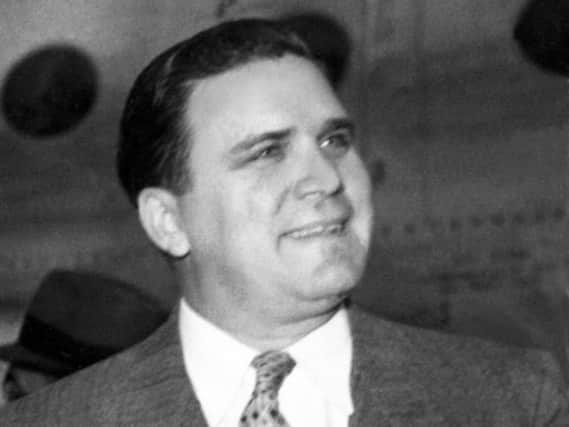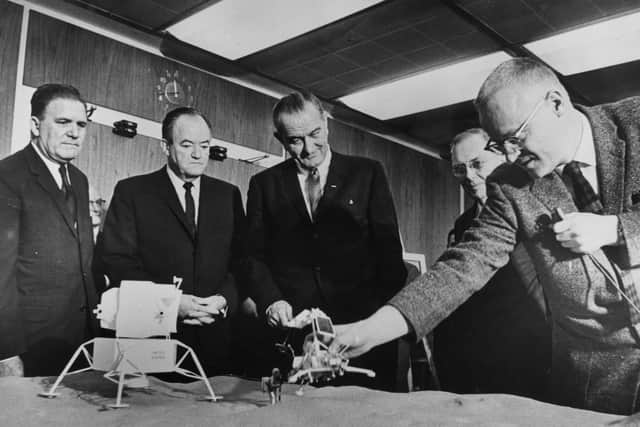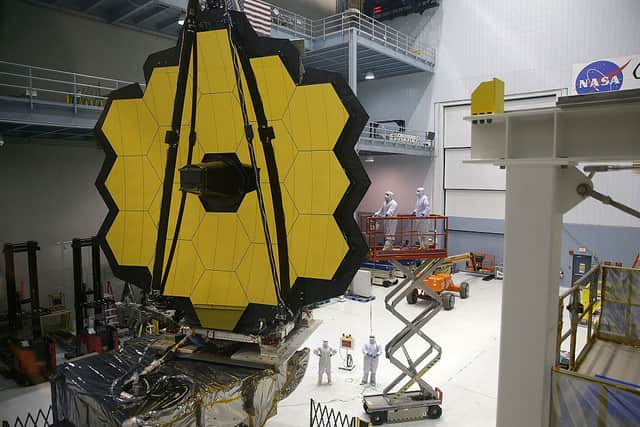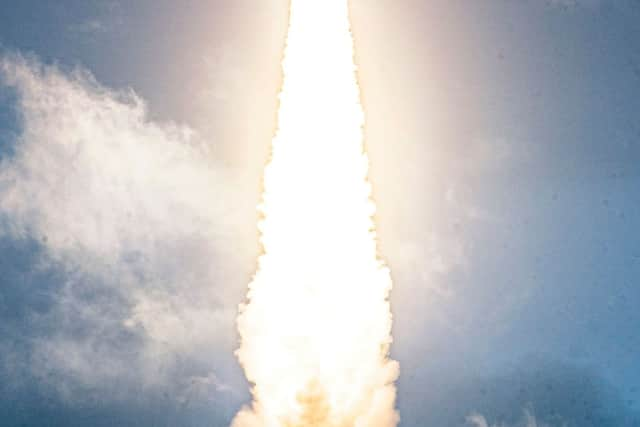Who is James Webb? Nasa Telescope named after Space Agency boss - what did he do and who named the telescope?


The first image from NASA‘s James Webb Space Telescope has been released, depicting the “deepest” and most detailed view of the cosmos to date.
During a White House event on Monday (11 July) evening, US President Joe Biden unveiled the image.
Advertisement
Hide AdAdvertisement
Hide AdThe James Webb telescope is one of the most innovative and exciting space missions since the Hubble Telescope launch in April 1990.
The mission is a joint venture between NASA and the European and Canadian space agencies to redefine our understanding of Earth’s solar system, as well as how the first galaxies were formed.
Just like Hubble was named after US astronomer Edwin Hubble, who discovered the universe is expanding, the James Webb telescope has also been named after a famous contributor to space science.
So, who is James Webb and what did he do to be honoured in such a way? This is what you need to know.
James Webb - early career
Advertisement
Hide AdAdvertisement
Hide AdJames Edwin Webb was an American government official who served as the second appointed administrator of NASA during the 1960s.
From 1961 to 1968, he ran the fledgling space agency and was largely responsible for its approach to the Apollo program and its success.
Born in Tally Ho, North Carolina, in 1902, Webb graduated with a Bachelor of Arts in Education in 1928 and enrolled in the US Marine Corps.
He served as a pilot for two years, before leaving to read law at The George Washington University Law School, where he graduated from in 1936.
Advertisement
Hide AdAdvertisement
Hide AdDuring his studies, he also served as assistant to US Representative Edward W. Pou of North Carolina from 1932 to 1934. This was to be the beginning of Webb’s commitment to public duty.
Upon graduating from university, Webb became the secretary-treasurer and subsequently the vice president of Sperry, an electronics and company which he expanded to more than 33,000 and became a major supplier of navigation equipment and airborne radar systems during World War II.
In 1938, he married Patsy Aiken Douglas and the couple had two children.
He re-enlisted in the Marines, briefly from 1944 to 1945, before departing and re-establishing himself as a public servant. He was briefly appointed Bureau of the Budget, before President Truman nominated Webb to serve as an undersecretary of state in the U.S. Department of State, which he began in January 1949.
Advertisement
Hide AdAdvertisement
Hide AdHe remained as an undersecretary for three years, before taking up a position in the Kerr-McGee Oil Corp until 1961, but continued to operate within the inner circles of Government and was a democrat.
In 1961, he was appointed the administrator of NASA by President John F Kennedy.
What was his role at NASA?
Webb directed NASA’s undertaking of President Kennedy’s ambitions of landing an American on the moon before 1970.
Despite his initial reluctance to take up the post, he went on to become a hugely successful boss of NASA, growing it from a relatively small group of aerospace organisations, to a world-leading pioneer of space science.
Advertisement
Hide AdAdvertisement
Hide AdWebb said of the offer by Kennedy: "I felt that I had made the pattern of my life, and I was not really the best person for this anyway. It seemed to me someone who knew more about rocketry, about space, would be a better person."
In May 1961, shortly after Webb’s appointment, Kennedy announced a manned mission to land on the moon by October 1968.
Webb oversaw the Apollo mission, and due to his connections in government he managed to provide continued Congressional support and government funding for the NASA programme.
He continued in his role under Lyndon B Johnson, and NASA paid tribute to him as a chief who managed to put consideration of science and technology before human space travel.


Advertisement
Hide AdAdvertisement
Hide AdThe US space agency says he depoliticised the space race, as the Soviets were also planning to be the first to launch humans into space.
According to Webb’s transcripts of early conversations between himself, President Kennedy and VP Johnson, he told them: “And so far as I’m concerned, I’m not going to run a program that’s just a one-shot program.
“If you want me to be the administrator, it’s going to be a balanced program that does the job for the country..."
Webb’s vision saw continued investment into NASA’s development of robotic spacecraft, which explored the lunar environment so that astronauts could do so later and led to scientific probes being sent to Mars and Venus.
Advertisement
Hide AdAdvertisement
Hide AdHis programme meant the US was also to provide the first ever view of the landscape of outer space and by 1965, he had already made plans for a large telescope to be deployed into space. This would later become Hubble.
Despite his devotion to the moon landing, he retired from his post as NASA just months before the moon landing took place in July 1969.
Paying tribute to Webb, NASA said his initial probe launches led to “more than 75 space science missions to study the stars and galaxies, our own Sun and the as-yet unknown environment of space above the Earth’s atmosphere.”
“Missions such as the Orbiting Solar Observatory and the Explorer series of astronomical satellites built the foundation for the most successful period of astronomical discovery in history, which continues today,” it added.
What did he do after NASA?
Advertisement
Hide AdAdvertisement
Hide AdUpon retiring from NASA, Webb went on to serve on several advisory boards, including serving as a regent of the Smithsonian Institution.
In 1981, he was awarded the Sylvanus Thayer Award by the United States Military Academy at West Point for his dedication to his country.
He died of a heart attack in March 1992.
Who named the James Webb telescope?
The James Webb telescope has been in the planning stages since the turn of the century, and was named the James Webb telescope in 2002.


Despite attempts by some US scientists to overturn the name due to beliefs he was opposed to LGBTQ+ equality in the NASA workforce, no such evidence was provided and the decision was made to name the telescope in his honour.
Advertisement
Hide AdAdvertisement
Hide AdNASA Administrator Sean O’Keefe announced the name of the telescope, saying:, "It is fitting that Hubble’s successor be named in honor of James Webb. Thanks to his efforts, we got our first glimpses at the dramatic landscape of outer space.


“He took our nation on its first voyages of exploration, turning our imagination into reality. Indeed, he laid the foundations at NASA for one of the most successful periods of astronomical discovery.
“As a result, we’re rewriting the textbooks today with the help of the Hubble Space Telescope, the Chandra X-ray Observatory, and the James Webb Telescope."
Comment Guidelines
National World encourages reader discussion on our stories. User feedback, insights and back-and-forth exchanges add a rich layer of context to reporting. Please review our Community Guidelines before commenting.
